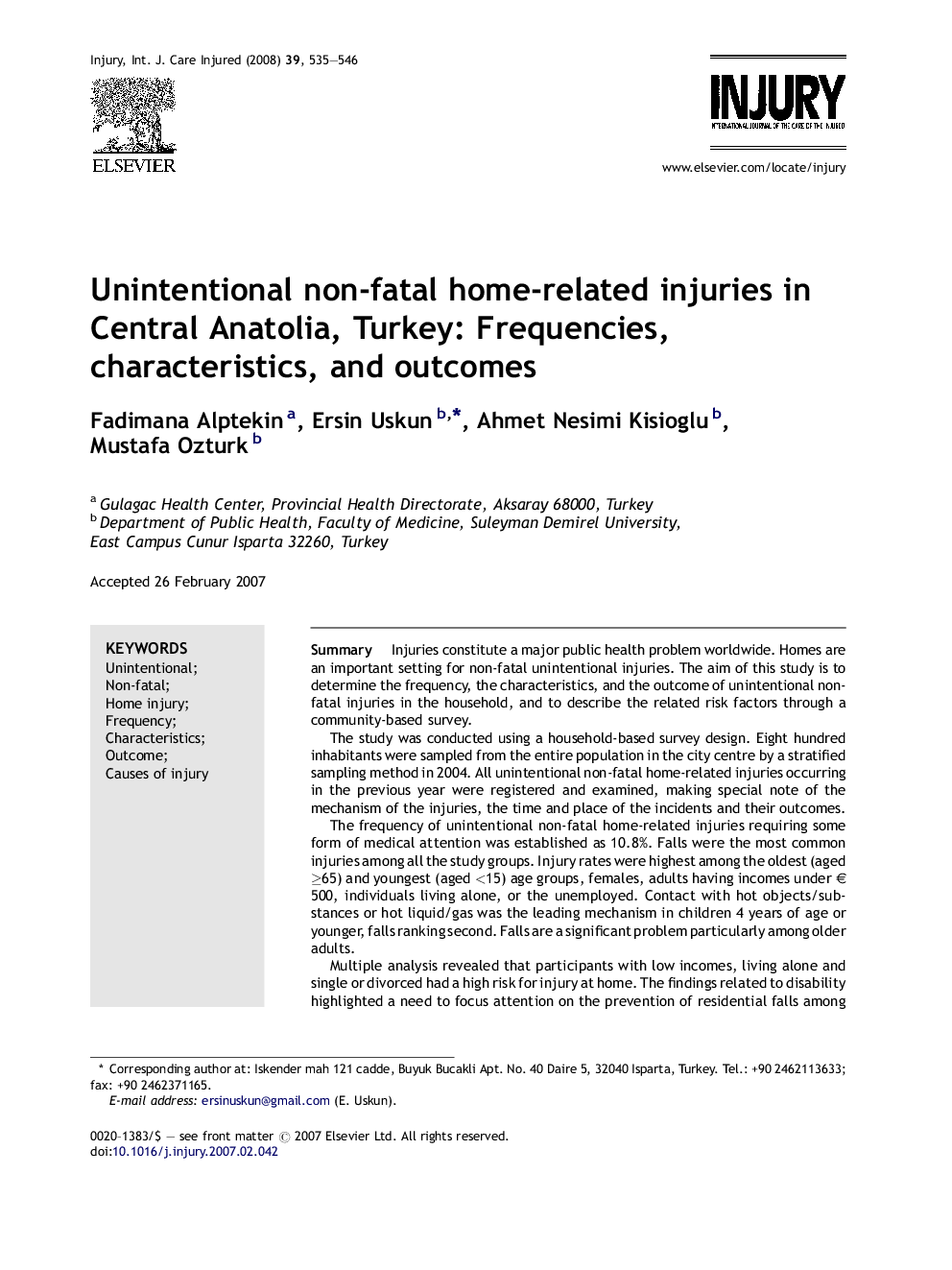| Article ID | Journal | Published Year | Pages | File Type |
|---|---|---|---|---|
| 3242067 | Injury | 2008 | 12 Pages |
SummaryInjuries constitute a major public health problem worldwide. Homes are an important setting for non-fatal unintentional injuries. The aim of this study is to determine the frequency, the characteristics, and the outcome of unintentional non-fatal injuries in the household, and to describe the related risk factors through a community-based survey.The study was conducted using a household-based survey design. Eight hundred inhabitants were sampled from the entire population in the city centre by a stratified sampling method in 2004. All unintentional non-fatal home-related injuries occurring in the previous year were registered and examined, making special note of the mechanism of the injuries, the time and place of the incidents and their outcomes.The frequency of unintentional non-fatal home-related injuries requiring some form of medical attention was established as 10.8%. Falls were the most common injuries among all the study groups. Injury rates were highest among the oldest (aged ≥65) and youngest (aged <15) age groups, females, adults having incomes under € 500, individuals living alone, or the unemployed. Contact with hot objects/substances or hot liquid/gas was the leading mechanism in children 4 years of age or younger, falls ranking second. Falls are a significant problem particularly among older adults.Multiple analysis revealed that participants with low incomes, living alone and single or divorced had a high risk for injury at home. The findings related to disability highlighted a need to focus attention on the prevention of residential falls among the elderly, and the burns and falls among young children. Preventive measures should be prioritised to risk groups such as individuals with low incomes and those living alone.
